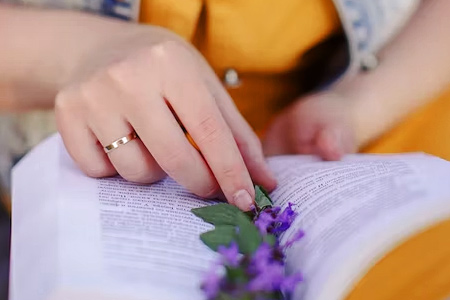![]() What have feathers and flowers got to do with paperbacks? A lot actually!
What have feathers and flowers got to do with paperbacks? A lot actually!
Most of us rarely finish reading a book in one sitting. The reason for these breaks ranges from natural or forced procrastination, fatigue, shortage of time to professional commitments.
The need to mark reader’s place instead of “Dog-ear” gradually paved way for a fascinating accessory called the “bookmark”.
As the earlier printed books were quite rare and valuable it became all the more imperative to preserve them, and it all began at the end of 16th century. Even during the medieval times, when printing was still a secret, bookmarks were used in the form of a small parchment strip attached to the edge of the manuscript. Bookmarks were not only used to make the next reading session hassle-free but also to prevent damage to the pages.
THE SILK BOOKMARK –
Interestingly, at the end of 15th century, Queen Elizabeth was presented with a fringed silk bookmarker by Christopher Barker who earlier gained rights of becoming the Queen’s printer in 1577. It offered him exclusive rights to print the Bible, Book of Common Prayer and complete Proclamations. During the following period, especially in the 18th and 19th centuries, books were accompanied by silk bookmarks . These were hinged to the spine, draped from the top and ran all the way to the bottom of the page.
It was during the same period, solo or detached bookmarks arrived. A reference to this is found in Mary Russell Mitford’s Recollections of a Literary Life (1852). By the end of 18th century and beginning of the 19th century cloth based bookmarks started declining, taken over by printed versions.
Somewhere during this period readers also started using natural objects such as bird feathers, especially peacock, to bookmark a page. Readers continued to experiment with other types of feathers and even flowers. Most of these were used for romance books as they were synonymous with love, and inspired by classic films and literature.
Incidentally, feathers have also been exploited as a writing tool and therefore its use as a bookmark is not surprising. On the other hand, contemporary bookmarks are available in a bouquet of shapes and materials. You can opt from a simple fabric and cardboard variant to a more exotic one made from gold, silver and dotted with precious stones.
Nonetheless, peacock’s feather and flower bookmarks continue to intrigue and excite readers.
Buy N.Lalit's Books | Shorts - Amazon | Kindle OR Author Website

